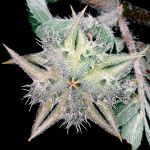| Common Name: |
Caltrop |
| Other Names: |
Puncturevine, goatshead |
| Botanical Name: |
Tribulus terrestris |
| Genus: |
Tribulus |
| Family: |
Zygophyllaceae |
| Location: |
Widespread in tropical and subtropical regions |
| Cultivation: |
Moist sandy soil in sun. |
| Propagation: |
By seed sown in spring. |
| Harvest: |
Fruits are collected when ripe and dried for decoctions. |
| Height: |
15-90cm (6-36in) |
| Width: |
15-90cm (6-36in) |
| Hardiness: |
Z10 |
| Parts Used: |
Fruits |
| Properties: |
A bitter-sweet, warming, diuretic herb that controls bleeding, has a tonic effect on the liver and kidneys, and stimulates the circulation. It is reputedly aphrodisiac.. |
| Medicinal Uses: |
Internally for impotence, premature ejaculation, sprematorrhea, frequent urination, kidney complaints, blurred vision due to deficient liver energy, lumbago, and nosebleeds; also to strengthen contractions during prolonged of difficult labor. |
| Culinary Uses: |
Young leaves and shoots are cooked as a vegetable. Fruits are infused to make tea. |
| Economic Uses: |
Extracts are added to bodybuilding formulas as an alternative to anabolic steroids.. |
| Warning: |
Subject to statutory control as a weed in certain areas. |
| Bibliography: |
Encylopedia of Herbs by Deni Brown Copyright ©: 1995, 2001 Dorling Kindersley Limited pg 392
|

